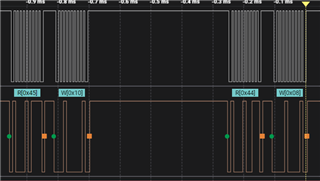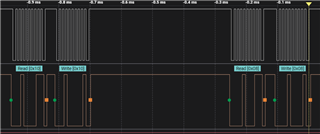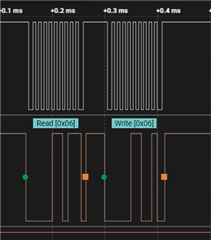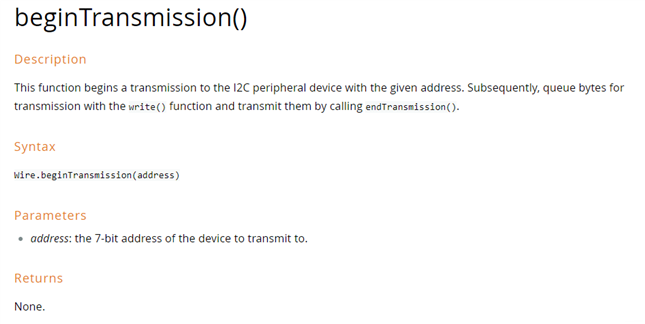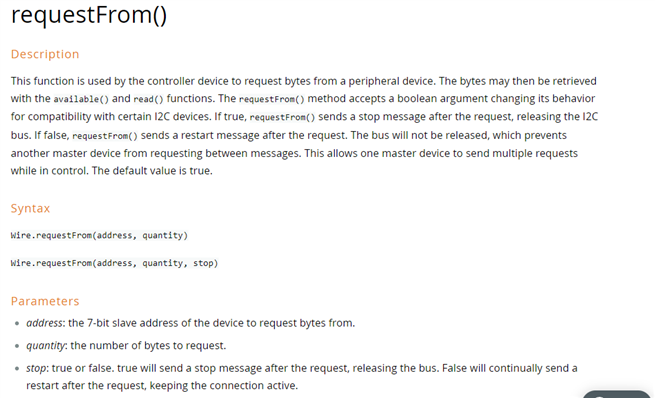Other Parts Discussed in Thread: INA228, INA233, ADS122C04,
Good Afternoon
I am having difficulty with I2C addressing of this chip, i have INA233 x 2 and INA228 on same bus, all working perfectly but i also have three of the ADS112co4 chips, configured by A0 A1 as address 0x43,0x44 and 0x45
INA chips 0x40,0x41 and 0x4F

The ads chips just return a nak signal, no other response, pull ups are 1K as per datasheet to 3V3 at 100K standard speed. All pcba mounted no prototype setup
So as in the image three address's with NAK 4th address ok with ACK and accepting many more configuration bytes. So why?
very puzzling
regards
Andy



 So i can see a start condition (i think) then the address (hardwired ic to 0x45) but not matter what i do i get a NAK
So i can see a start condition (i think) then the address (hardwired ic to 0x45) but not matter what i do i get a NAK